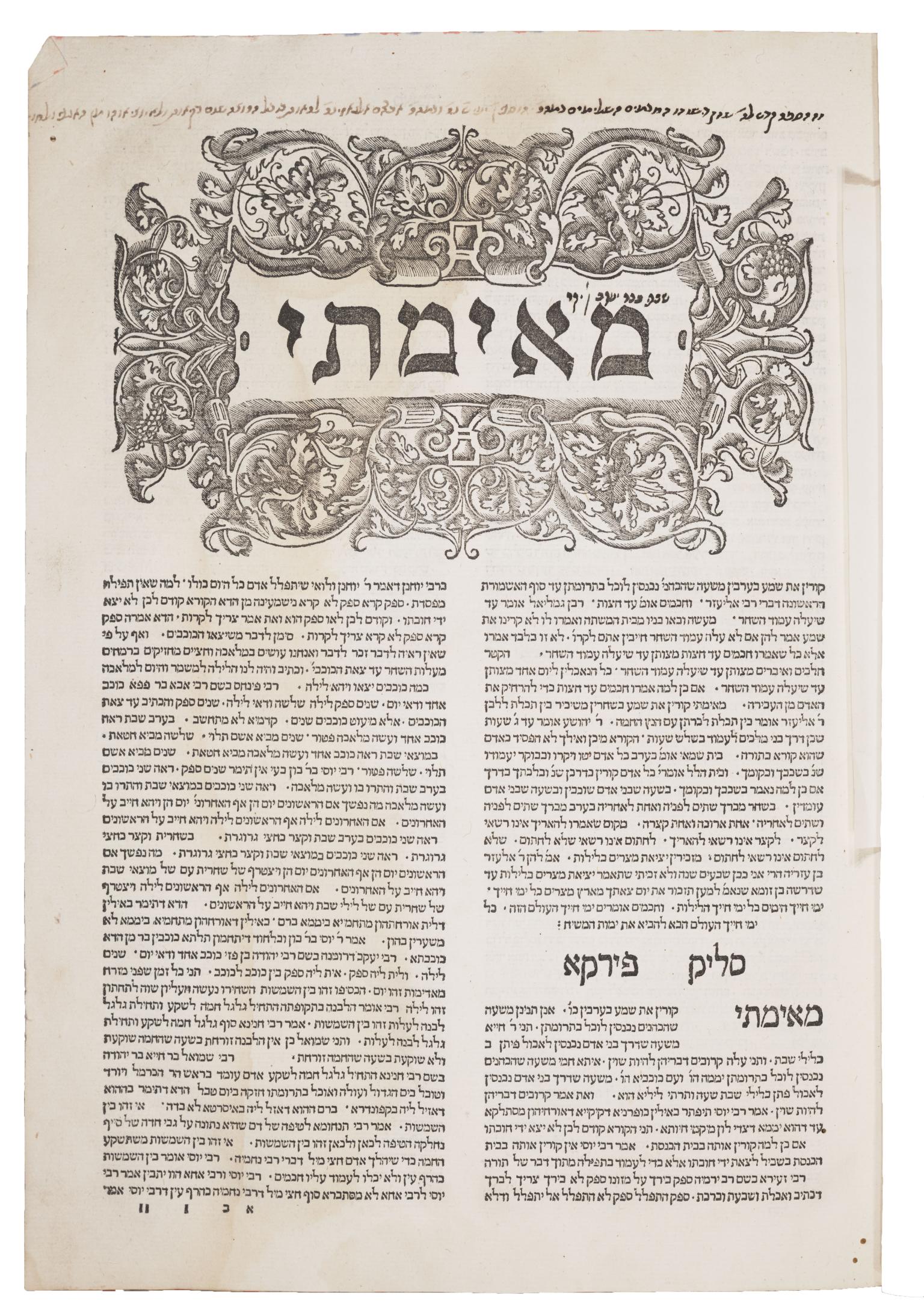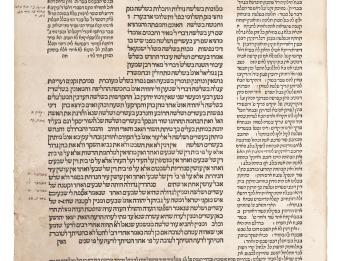Bomberg Jerusalem Talmud
Daniel Bomberg
1522/3–1524
Image

Printing, which Jews adopted immediately after its invention, helped to unify far-flung communities. Where previously Jewish learning had been transmitted through the individual copying of manuscripts, the nascent printing industry now made Jewish books widely available. It also, inevitably, led to unprecedented uniformity in fundamental Jewish texts. Most famously, Daniel Bomberg, a Christian printer from Antwerp, established a printing house in Venice in 1516. Employing Jewish proofreaders, he printed
two editions
 of the Hebrew Bible with the principal commentators (known as Mikra’ot gedolot) between 1516 and 1526. Even farther-reaching in its consequences was Bomberg’s printing of the Babylonian Talmud, with the commentaries of Rashi and Tosafot, providing a uniform model, which was eventually adopted by the entire Jewish diaspora. The first edition, published between 1520 and 1523, comprised forty-four tractates; in later years, Bomberg printed three more editions, all of which were either partial or incomplete. Bomberg established the now-standard layout of the page of the Talmud. He also produced the first printed edition of the Jerusalem Talmud.
of the Hebrew Bible with the principal commentators (known as Mikra’ot gedolot) between 1516 and 1526. Even farther-reaching in its consequences was Bomberg’s printing of the Babylonian Talmud, with the commentaries of Rashi and Tosafot, providing a uniform model, which was eventually adopted by the entire Jewish diaspora. The first edition, published between 1520 and 1523, comprised forty-four tractates; in later years, Bomberg printed three more editions, all of which were either partial or incomplete. Bomberg established the now-standard layout of the page of the Talmud. He also produced the first printed edition of the Jerusalem Talmud.
 of the Hebrew Bible with the principal commentators (known as Mikra’ot gedolot) between 1516 and 1526. Even farther-reaching in its consequences was Bomberg’s printing of the Babylonian Talmud, with the commentaries of Rashi and Tosafot, providing a uniform model, which was eventually adopted by the entire Jewish diaspora. The first edition, published between 1520 and 1523, comprised forty-four tractates; in later years, Bomberg printed three more editions, all of which were either partial or incomplete. Bomberg established the now-standard layout of the page of the Talmud. He also produced the first printed edition of the Jerusalem Talmud.
of the Hebrew Bible with the principal commentators (known as Mikra’ot gedolot) between 1516 and 1526. Even farther-reaching in its consequences was Bomberg’s printing of the Babylonian Talmud, with the commentaries of Rashi and Tosafot, providing a uniform model, which was eventually adopted by the entire Jewish diaspora. The first edition, published between 1520 and 1523, comprised forty-four tractates; in later years, Bomberg printed three more editions, all of which were either partial or incomplete. Bomberg established the now-standard layout of the page of the Talmud. He also produced the first printed edition of the Jerusalem Talmud.Credits
Jerusalem Talmud, Berakhot 2a. Daniel Bomberg, from Talmud Yerushalmi (Venice, 1522–1524), Library of Congress.
Published in: The Posen Library of Jewish Culture and Civilization, vol. 5.




